In this article, you will learn what is an Air Conditioner? Its Working, Applications, and Types of Air Conditioners are explained with Pictures.
If you need a PDF file? Just download it at the end of the article.
What is Air Conditioner?
Air conditioning refers to the process that removes heat from an enclosed space to achieve a more comfortable interior environment. In certain situations, it also tightly regulates the air’s internal humidity.
Mechanical devices “air conditioners” are one way to achieve air conditioning, but there are also many other options, such as passive or ventilative cooling. Most air conditioners use vapor-compression refrigeration and come in various sizes, from tiny ones used in cars or small rooms to enormous ones that can cool huge structures.
One of the most popular electrical appliances in American homes is the air conditioner. According to Wikipedia, A/C systems of some kind are installed nearly 75% of homes in the USA.
There are various types of air conditioners, and each has its own advantages and disadvantages. Window air conditioners, portable air conditioners, wall-hung split or multi-head split systems, and ducted air conditioners are the most popular air conditioning units.
Each air conditioner, even those in the same class, differs significantly in terms of quality and features. Let’s look at them individually in more detail below.
Read Also: Different Types of Furnaces: Their Working & Applications
Types of Air Conditioners
Following are the main types of air conditioners:
- Central air conditioning system
- Ductless mini-split air conditioner
- Portable air conditioner
- Floor-mounted air conditioner
- Window air conditioner
- Smart air conditioner
- Geothermal air conditioning system
- Hybrid or dual fuel air conditioner
- Cassette air conditioner
- Evaporative air conditioner
#1 Central Air Conditioning System
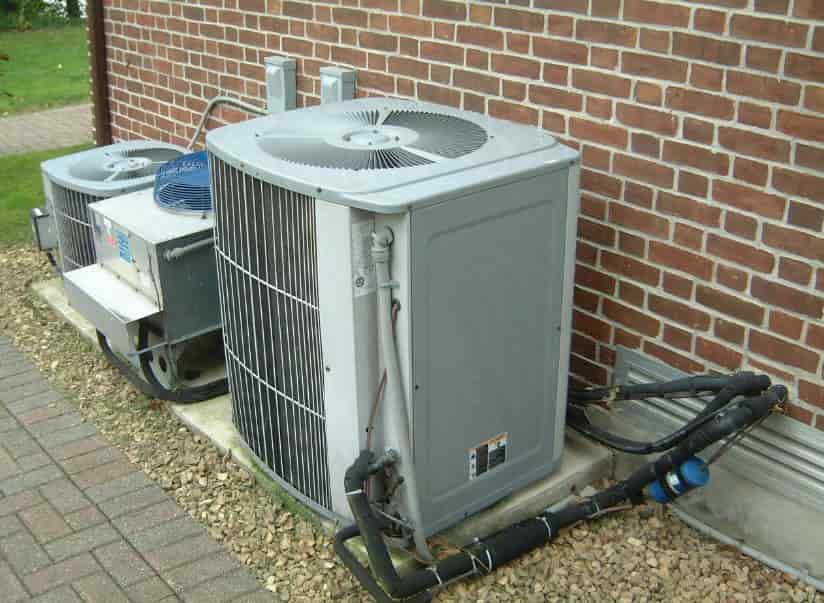
This is the costliest type of conventional air conditioner which usually requires a large space to be installed. These types of air conditioning systems can undoubtedly be the best option for you if you want to cool several rooms simultaneously.
A split system is used by a central air conditioner to control airflow through ducts that are installed in your home. It consists of two units: the condensing unit and the evaporative unit, linked by refrigerant tubing.
The condenser and compressor are equipped in the outdoor unit, while the evaporator coils and air handler are found inside. These air conditioners use refrigerants to cool the indoor air. This heat is sent outdoors, and cool air is introduced through the ducts.
| Advantages | Disadvantages |
|---|---|
| It can cool every room with duct connections simultaneously. As a result, the house’s surroundings become cooler and more controlled quickly. | Consumes a lot of energy, which raises the cost of this system. |
| Humidity is reduced around the house since cool air circulates in all rooms. | If a technical problem develops in the AC system’s ducts, the efficiency may be impacted. |
| Noisy parts are located outdoors | Since they can be hidden in the backyard, outdoor units are thought to be unattractive. |
#2 Ductless Mini-Split Air Conditioner
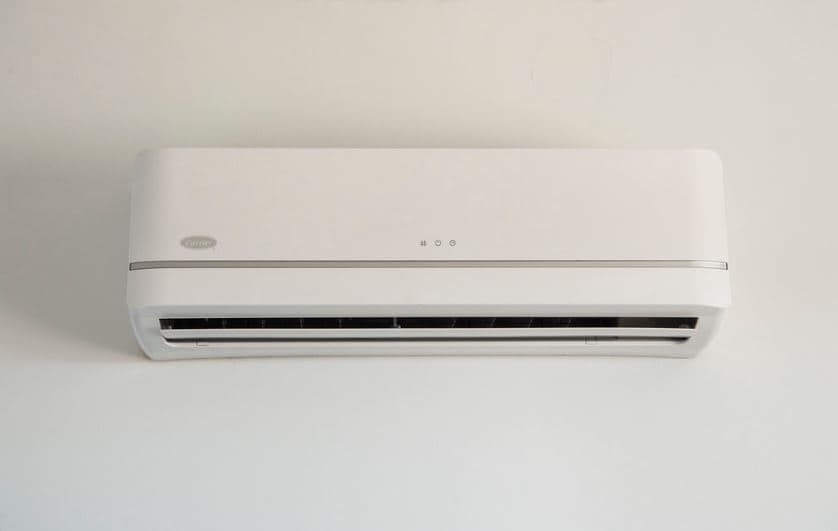
A ductless mini-split air conditioner consists of one or more indoor units and an outdoor unit with a compressor and a condenser. Indoor units of this type of air conditioner are mounted on a wall and equipped with an air blower.
Depending on the type of use, different amounts of refrigerant circulate through the indoor and outdoor units, which are connected by tubing. The indoor units are compact and small, so each room usually gets its own unit, which can be used for either heating or cooling.
It is well known that these air conditioners use less energy than some alternative models. On the other hand, it can also be costly if you plan to install one in each room to cover the entire home.
| Advantages | Disadvantages |
|---|---|
| They don’t require ductwork and can be easily installed anywhere. | For cooling large homes, a single ductless mini-split unit is insufficient. |
| This helps in reducing unnecessary energy costs. | Ductless mini-splits have wall-mounted indoor units, so they are visible. |
| Each room’s temperature can be easily adjusted separately. | Installation cost is high. |
Read Also: Understand Summer, Winter, and Year-Round Air Conditioning System
#3 Portable Air Conditioner
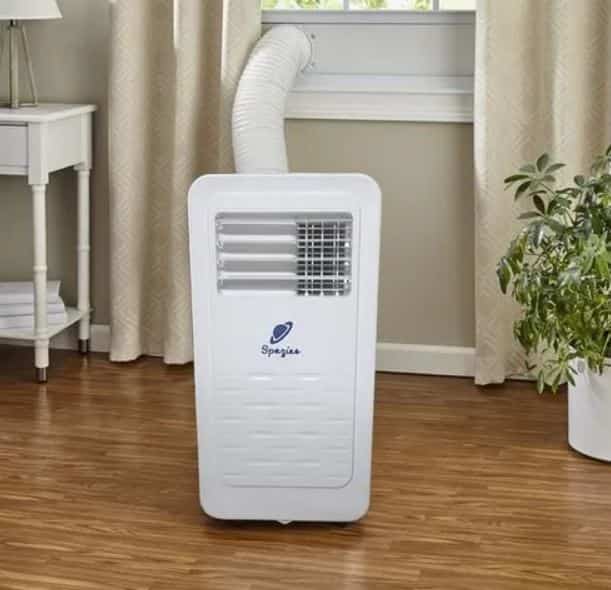
It is a self-contained portable system that is ideal for cooling single rooms and is relatively easy to move. In addition, all the components are enclosed in one unit, but it is a free-standing unit, which means it can be moved from room to room.
It needs access to a window where it can exhaust its air using a funnel and a power outlet to function. In this, warm air is drawn into the system, cooled, and then sent back into the room. These systems are available in two models: Single-hose and double-hose portable ACs.
Single-hose portable air conditioners can draw air from inside a room and exhaust it outside. With a dual-hose system, the air is pulled from the outdoors, cooled by the compressor, and exhausted outdoors.
| Advantages | Disadvantages |
|---|---|
| These systems are quick and simple to set up. | These types of air conditioners make noise during operation. |
| It can be easily moved around the house and requires no permanent installation. | It cannot cool large rooms, which is a problem. |
| This can be an effective alternative to spot cooling. | The hose on portable units also blocks the lower part of your window when placed near a window. |
| When not in use, conveniently stored. |
#4 Floor Mounted Air Conditioner
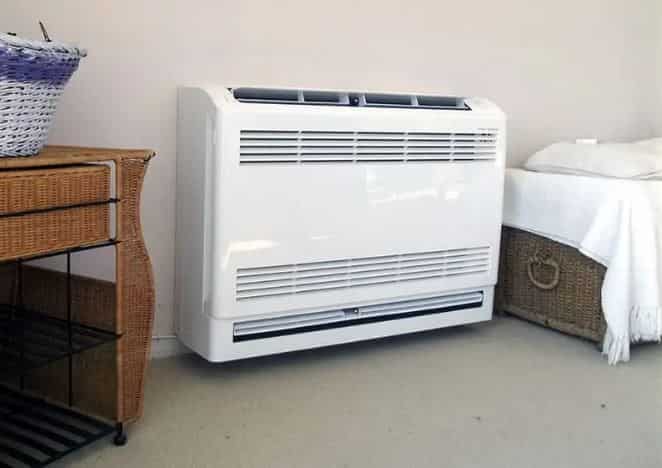
This term refers to the fact that these units are frequently found at the base of the wall, close to the floor. Floor-mounted air conditioners have an indoor unit that rests on the floor, and the outer unit can be installed with little to no ductwork or significant site preparation.
It is ideal for buildings with sloping walls, such as attics, or those constructed of fragile materials, such as glass. Because the fan blows the air directly at your level, these units cool or heat the room more quickly than any other mounting system.
On the contrary, units mounted high up on the wall may struggle to cool the room uniformly and efficiently. However, floor units require open space around them for effective operation and sufficient air circulation.
| Advantages | Disadvantages |
|---|---|
| Due to accessibility, it is advantageous for senior citizens living at home. | Because of the obstacles in the room, such as furniture, airflow may be impacted. |
| Set up is much easier than other types of air conditioners. | Due to the uneven and localized air flow distribution, it is inappropriate for large rooms. |
| It can be a great option for difficult and restricted spaces. |
Read Also: What are the Different Types of Heat Exchangers? Its Application Explained
#5 Window Air Conditioner
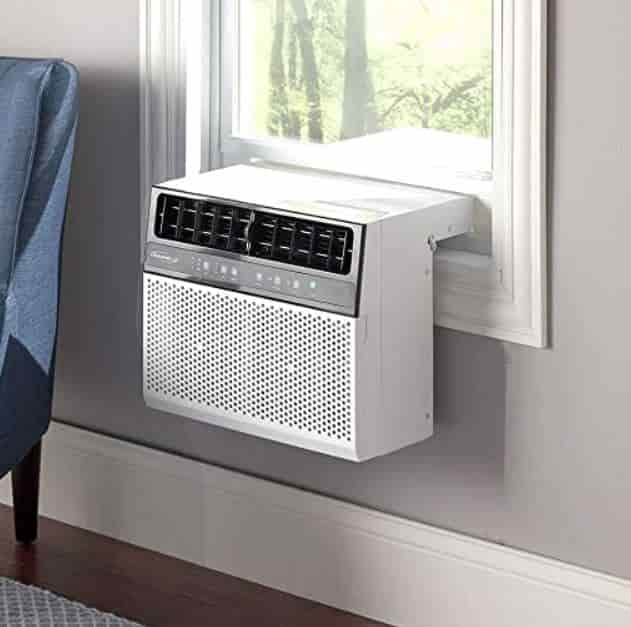
A window air conditioner is a single unit containing all parts and components inside one box or casing. These units are made to fit in windows so that the front faces inside and the back faces outside.
This design allows the air conditioner to remove condensation and heat while using a built-in fan to push cool air into the home. Window air conditioners come in various sizes. If they have smart system capabilities, they can even be operated wirelessly or with remote controls.
It is perfect for an apartment that lacks building-wide central air conditioning. Just be aware that improper installation can cause these units to fall out of windows, creating a risk to anyone who walks underneath them.
| Advantages | Disadvantages |
|---|---|
| Window air conditioners cost less and use less energy. | When in use, it may be noisy and noticeable outside the house. |
| These types of air conditioners are easy to install and easy to maintain. | They must be placed close to an appropriate electrical outlet and block the view from a window. |
| It doesn’t occupy much space on the floor. | Window air conditioners can’t be used with oddly shaped windows. |
#6 Smart Air Conditioner
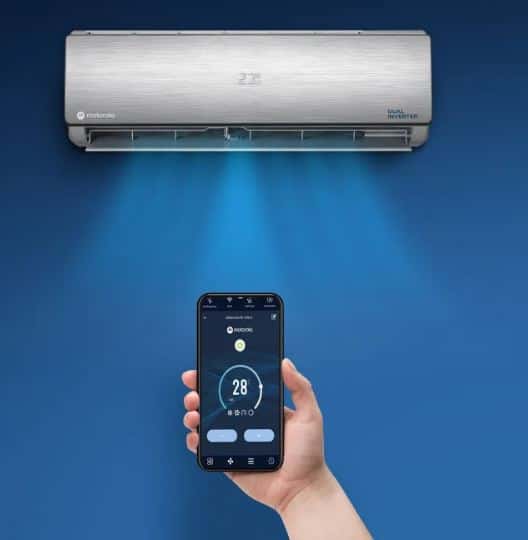
Unlike regular air conditioners, smart ACs let you operate them and control their functions via a smartphone or tablet. These units are Wi-Fi enabled and include a native app allowing global control via smartphone.
By using an app, you can control the room temperature and schedule the air conditioner to turn on or off at particular times. You can achieve great comfort while also saving energy by using these units.
These types of air conditioners are also available in the market and provide all the functionality of a smart AC to any conventional ducted unit. They function similarly to programmable thermostats and are considerably less expensive than smart air conditioners.
| Advantages | Disadvantages |
|---|---|
| They offer comfort and convenience. | It needs wireless connectivity to work correctly. |
| It helps to improve energy efficiency. | To use all the features, you must have Wi-Fi connectivity. |
| Numerous choices are compatible with smart systems. | Smart ACs have a higher price tag than other systems. |
Read Also: 23 Types of Metals: Their Properties and Applications
#7 Geothermal Air Conditioning System
Geothermal heating and cooling is a new technology that relies on the earth’s natural insulating abilities. In order to reduce the home’s temperature, cool air is forced out through vents in the home’s existing ducts.
It typically uses less energy than a standard furnace or central air conditioning system and can heat a home during the colder months. Geothermal technology uses constant temperatures under 4 to 6 feet of land, regardless of the weather, to heat and cool your home more efficiently.
Circulating water into the ground is how geothermal systems function. The ground can act as a heat sink during the summer because the water transports heat from the house and releases it deeply into the soil.
| Advantages | Disadvantages |
|---|---|
| Regarding energy usage, they are very effective. | Installation is location-dependent because loops are buried in the ground. |
| It generally lives longer than other types. | Apartments, condos, and houses with small yards are not suitable for them. |
| Utilizes the current duct systems to cool the entire house. | Its initial purchase and installation costs are high. |
Read Also: Important Mechanical Properties Explained with Examples
#8 Hybrid or Dual Fuel Air Conditioner
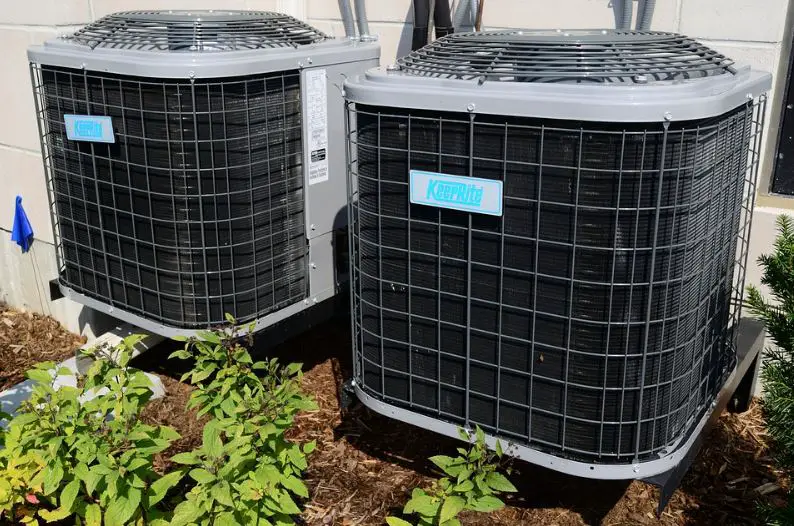
The hybrid system combines a gas furnace and an electric air-source heat pump to achieve cost-effective and efficient heating and cooling. The system automatically alternates between burning fossil fuels and using electricity, depending on the temperature outside.
These types of air conditioners let you set the temperature at which it switches from the heat pump to the furnace. You can also manually switch the system on and off. The heat pump continues to operate in the summer by expelling warm air from inside your house outside.
In the winter, this procedure is reversed, distributing heat throughout your house. The furnace activates when it is too cold outside for a heat pump to operate effectively.
| Advantages | Disadvantages |
|---|---|
| It provides increased indoor comfort while lowering utility costs. | Its high initial setup costs are its main drawback. |
| Carbon footprint may be reduced. | Over time, breakeven might happen. |
Read Also: Different Types of Pulleys? with Their Applications
#9 Cassette Air Conditioner
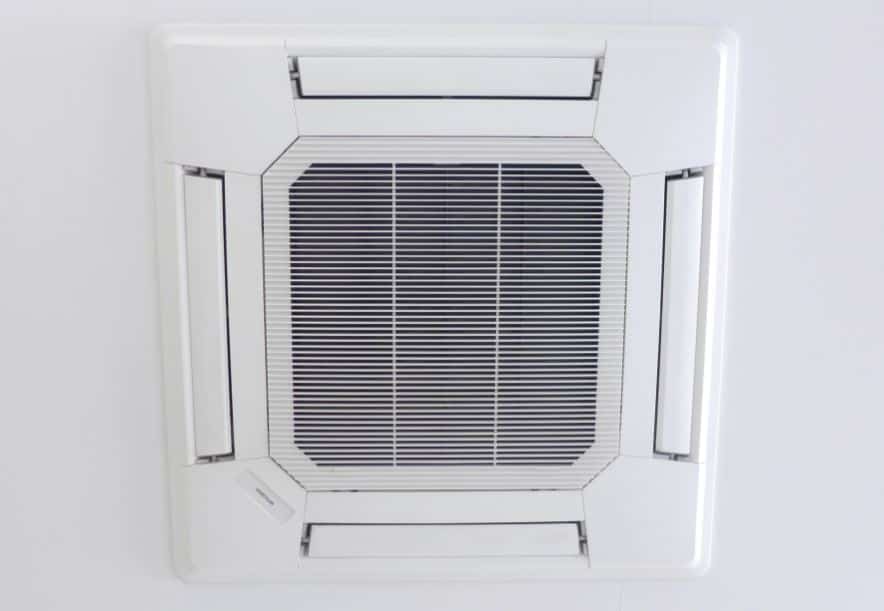
As far as air conditioning is concerned, cassette air conditioners are widespread and are usually used to cool offices, shops, and hotels, among other places. Because they are energy-efficient and cost-effective, they are often chosen in new buildings because of their high energy efficiency.
Cassette air conditioners function similarly to other wall-mounted split system systems. The cassette systems are mounted on the ceiling as opposed to the wall, which is the main difference.
The AC’s inner unit on the ceiling has two, three, or four sides that distribute conditioned air. Like a typical system unit, the external device is located outside.
| Advantages | Disadvantages |
|---|---|
| It has the ability to distribute the air throughout the room. | Since they are roof-mounted, their compressors are located outside. |
| Cassette air conditioners are better suited for larger spaces. | It can cost a lot of money and take a while to install. |
| They take up far less room when installed on the ceiling and are practically unnoticeable. |
#10 Evaporative Air Conditioner
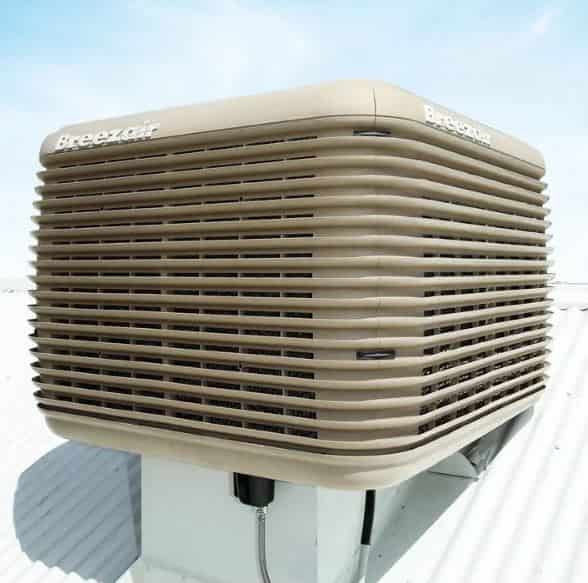
Basically, it is a type of air conditioning system that makes use of water to evaporate to cool air, as its name suggests. Compared to other types of air conditioning systems, evaporative cooling uses vapor-compression or absorption refrigeration cycles, which are passive types.
These devices circulate warm air over ice buckets or through wet pads. As the air is blown into the home, it becomes cooler due to the water or ice’s temperature. Even so, a major drawback of these devices is that they only work well with cold water or ice, necessitating regular monitoring and refilling of portable units.
Evaporative air conditioners are not the best option if high humidity is a constant issue because they raise the humidity in the home.
| Advantages | Disadvantages |
|---|---|
| It can be used as both portable or entire-house units. | The cooling capacity is below that of conventional air conditioners. |
| For cooling, this system doesn’t rely on dangerous chemicals like freon. | For some people, increased humidity can be a serious problem. |
| Improves dry, arid conditions by raising the humidity. | Water and ice should be checked and restocked on a regular basis. |
Read Also: How Does A Gas Turbine Power Plant Works? Advantages & Disadvantages
Wrapping It Up
That’s it. Thanks for reading. I hope I have covered everything about the “Types of Air Conditioners.” If I missed something, or if you have any doubts, let me know in the comments. If you liked this article, please share it with your friends.
Want free PDFs direct to your inbox? Then subscribe to our newsletter.
Download PDF of this article:
You might like to read more in our blog:
well explain. thanks for sharing
You’re welcome.
Brilliant
Thank you.